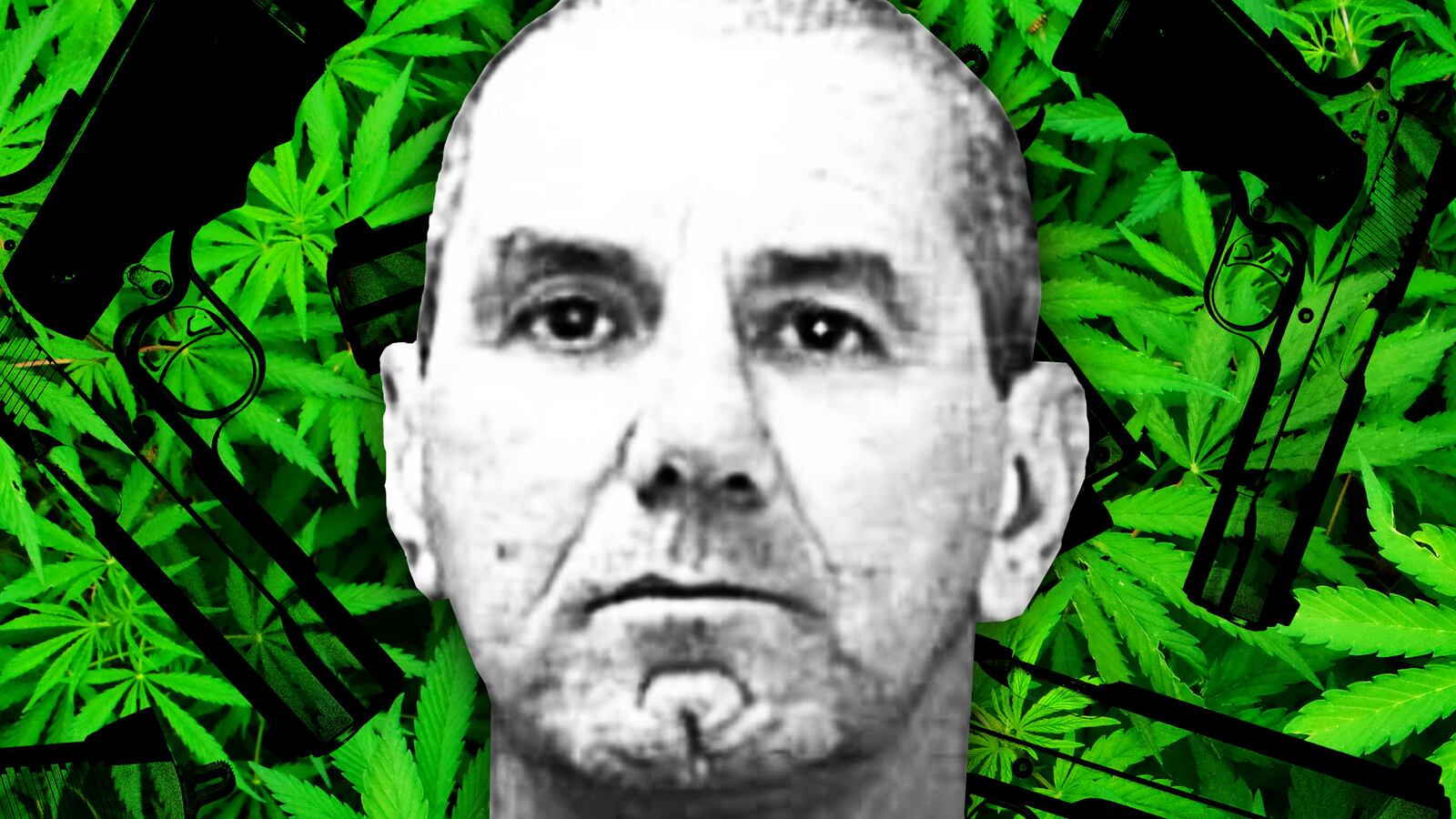One cold January night in 1977, David Goodwin went to the beach for business.
Goodwin had been hired to unload bales of marijuana from a boat anchored at a Florida beach, and haul the bales of weed onto waiting trucks. Goodwin didn’t know he was walking into an FBI trap. And he never imagined that shortly after showing up, four bystanders would be killed — and that he would be convicted of their murders despite being nearly 150 miles away when the shots were fired.
Now after nearly 40 years in prison, including a stint on death row, Goodwin is going free. The 70-year-old inmate was granted parole this month and is scheduled to leave Everglades Correctional Institute in Miami, Florida on May 2.
Court records from his trial in 1978 and his 1981 appeal tell the story of how Goodwin’s life was upended late one January night, with the arrival of a boat called the Gunsmoke in a Florida bay.
Until Sunday morning, January 23, 1977, the Gunsmoke had been a 70-foot shrimp boat operating out of the small fishing villages along the Florida panhandle. But on that January night, the nondescript boat had more valuable cargo than shrimp. When the Gunsmoke sailed into a quiet inlet east of Panama City with 20 tons of Colombian marijuana aboard.
The massive shipment was secretly part of a massive FBI sting against a notorious drug-runner, orchestrated by a former bartender turned informant: Bobby Joe Vines. Vines’s neighbor, an FBI agent, had enlisted him into a sting operation intended to catch Floyd “Bubba” Capo,
Vines later testified he hired several men, including Goodwin, with the FBI’s knowledge to wait on shore and smuggle the weed off the boat. After the drug deal was complete, Vines was supposed to light a fire, signaling FBI agents to rush the beach and make arrests.
Vines never got to light that fire.
While Goodwin and the others were unloading the boat, four people stumbled upon them:. Harold Sims, 39, Douglas Hood, 21, Sandy McAdams, 14, and Sheila McAdams, 16.
Sims crossed paths with Walter Steinhorst, one of the men hired to smuggle the marijuana. Steinhorst was standing by the refrigerated trucks, armed with a armed with a rifle and pistol. He shot Sims on sight, and ordered Hood and the McAdams sisters into Goodwin’s nearby van.
Goodwin was so far away from where Sims was killed that he said he had to drive towards the sound of the gunshots. When Goodwin got there, he found Steinhorst guarding his van, with the three young people inside. Goodwin panicked.
Vines testified Goodwin was “real frantic,” “in a panic” and “scared to death” when he learned of Sims’s murder.Steve and Tom Lukefahr, two brothers involved in the drug smuggling, testified that Goodwin looked sick, that he could not swallow, and that he asked for water.
Lukefahr also said they were all very scared and that no one could control Steinhorst, and that he threatened his cohorts with the same fate as Sims if they did not cooperate, telling them that “he wanted to make sure he didn’t have to kill any more,” another smuggler testified.
Goodwin said that Steinhorst ordered him to bring rope to tie up the three hostages, and that he complied under fear of death. Even after the young people were bound in the back of Goodwin’s van, he still seemed to believe they would be spared, telling Vines that they would give the hostages some hush money and free them, Vines testified.
But Goodwin never saw what happened to the three people bound in his van. He remained behind while Steinhorst and another man drove the captives eastward along the coast until they reached a flooded sinkhole 150 miles away. There, Steinhorst shot the three young captives executive-style and dropped them into the sinkhole, concrete blocks tied to their feet. And for months, the quadruple homicide was almost buried with the bodies.
Steinhorst met up with Goodwin and the other smugglers at a rural farmhouse, where they returned Goodwin’s van, after burning potentially incriminating evidence from its interior. Vines met with his FBI handler to report on the disastrous deal, then fled Florida for Texas. Goodwin appeared “shaken” after the killings, Vines testified, but as the months passed, it appeared that the smugglers had got away with murder.
Then in August, a diver swimming in the watering hole found three skeletons anchored to the bottom with concrete blocks.
Police arrested a boatload of smugglers on murder charges, granting Vines and seven others immunity for their testimony. Six others were charged with third-degree murder. Three men, including Goodwin and Steinhorst, were charged with first-degree murder, a capital offense. (Charlie Hughes pleaded guilty to three downgraded counts of third-degree murder, and walked free from prison after serving fewer than five years of a 15-year sentence.)
The second man, Steinhorst, was convicted on four counts of first-degree murder and sentenced to death. Steinhorst died in prison in 1999, before his scheduled execution, but not before allegedly attempting to engineer the escape of four death row inmates, including himself shortly after his conviction. In a grand jury trial, Steinhorst’s wife testified that a helicopter was supposed to bomb a prison watch tower while inmates were in the outdoor exercise yard, and land long enough for the death row inmates to board the aircraft and fly to safety. (Then-State Attorney Ed Austin said it would be “ludicrous” to charge the inmates, who were already sentenced to death.)
Goodwin was also found guilty of three counts of first-degree murder, for the three people who had been held captive in his van as Steinhorst drove it to the sinkhole. The jury that convicted him recommended a life sentence in prison, rather than the death sentence. But a trial judge strayed from the jury’s recommendation, invoking the death penalty for Goodwin. For two years, he languished on death row, scheduled to die for three deaths he never even witnessed. Finally in 1981, Goodwin’s lawyer succeeded in getting him off death row.
“Although the crimes for which the appellant was convicted were cold-blooded and cruel, the appellant was not present at the time of the killings,” a Florida Supreme Court judge conceded in his 1981 opinion. “Though the appellant may have thought the three victims he had helped tie up might be killed, and he may have later been glad that they were killed because one of the victims had recognized him, he was not the ‘trigger man’ nor was he present during the killings.”
Goodwin’s death sentence was commuted to life in prison. But 36 years into his life sentence, Goodwin is a changed man, his family says. He became religious, and four years into his life sentence, fell in love with Wanda Pate, a woman who wrote him letters.
“I know he didn’t do it and that’s the thing that kept me going with him,” Pate told the Tallahassee Democrat. “He said ‘if Florida has its way I won’t never get out.’ But see, Florida didn’t have its way about everything. God had control.”
The pair has been engaged for decades, after they said their vows in an unofficial ceremony in a prison courtyard. They talk on the phone four days a week.
And while Goodwin’s life changed behind bars, officials’ understanding of his case was evolving. While the Florida Commission on Offender Review denied Goodwin’s motion for parole in 2015 and 2014, the commission finally granted his request on April 19. He will finally walk free on May 2.
“After 40 years it’s time,” Pate, now 82, said of her fiancé, who has maintained his innocence since 1977. “He sounded really happy. Happy; happy.”

